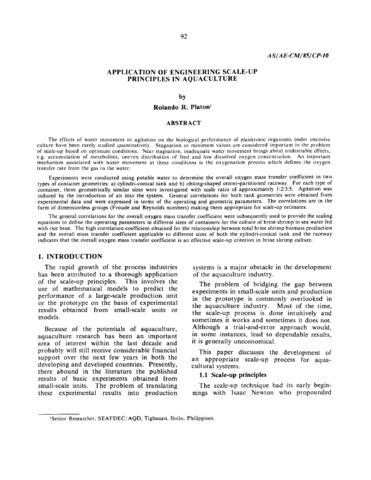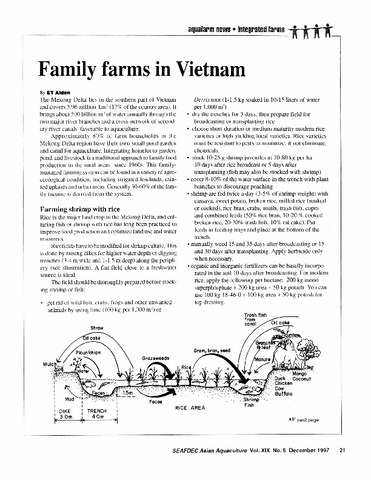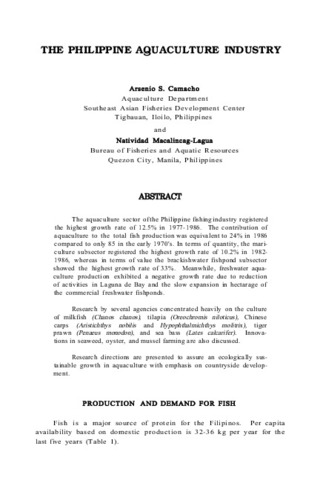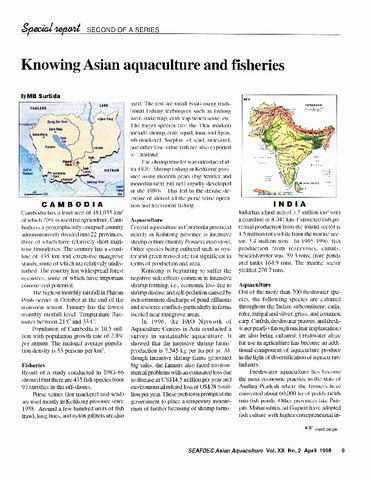Application of engineering scale-up principles in aquaculture
Share
Abstract
The effects of water movement or agitation on the biological performance of planktonic organisms under intensive culture have been rarely studied quantitatively. Stagnation or minimum values are considered important in the problem of scale-up based on optimum conditions. Near stagnation, inadequate water movement brings about undesirable effects, e.g. accumulation of metabolites, uneven distribution of feed and low dissolved oxygen concentration. An important mechanism associated with water movement at these conditions is the oxygenation process which defines the oxygen transfer rate from the gas to the water.
Experiments were conducted using potable water to determine the overall oxygen mass transfer coefficient in two types of container geometries: a) cylindri-conical tank and b) oblong-shaped center-partitioned raceway. For each type of container, three geometrically similar sizes were investigated with scale ratio of approximately 1:2:3:5. Agitation was induced by the introduction of air into the system. General correlations for both tank geometries were obtained from experimental data and were expressed in terms of the operating and geometric parameters. The correlations are in the form of dimensionless groups (Froude and Reynolds numbers) making them appropriate for scale-up estimates.
The general correlations for the overall oxygen mass transfer coefficient were subsequently used to provide the scaling equations to define the operating parameters in different sizes of containers for the culture of brine shrimp in sea water fed with rice bran. The high correlation coefficient obtained for the relationship between total brine shrimp biomass production and the overall mass transfer coefficient applicable to different sizes of both the cylindri-conical tank and the raceway indicates that the overall oxygen mass transfer coefficient is an effective scale-up criterion in brine shrimp culture.
Suggested Citation
Platon, R. R. (1986). Application of engineering scale-up principles in aquaculture. In Report of the National Consultative Meeting on Aquaculture Engineering, 2-5 October 1985, Philippines (pp. 92–98). Manila, Philippines: ASEAN/UNDP/FAO Regional Small-Scale Coastal Fisheries Development Project.
Collections
Related items
Showing items related by title, author, creator and subject.
-
Family farms in Vietnam
Aldon, Eva T. (Aquaculture Department, Southeast Asian Fisheries Development Center, 1997) -
The Philippine aquaculture industry
Camacho, Arsenio S.; Macalincag-Lagua, Natividad (Aquaculture Department, Southeast Asian Fisheries Development Center, 1988)The aquaculture sector of the Philippine fishing industry registered the highest growth rate of 12.5% in 1977-1986. The contribution of aquaculture to the total fish production was equivalent to 24% in 1986 compared to ... -
Knowing Asian aquaculture and fisheries
Surtida, Marilyn B. (Aquaculture Department, Southeast Asian Fisheries Development Center, 1998-04)This article is the second of four parts.





